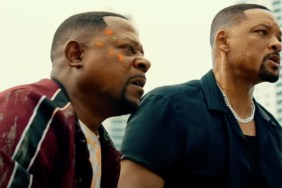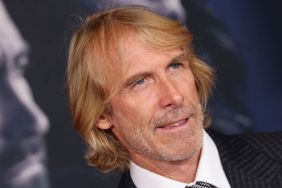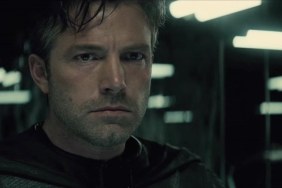The title of this article should actually end with an ellipsis followed by “aside from Armageddon, Bad Boys II or any of the Transformers films.”
Yeah, I’m a sucker for all things Michael Bay. The man makes entertaining movies flawlessly designed for the theater-going experience. I freely admit I saw Transformers: Revenge of the Fallen four times when it was released in 2009, and even uncharacteristically defended it against Roger Ebert’s vicious, though on point, attacks.
From a critical perspective, everything Bay does is wrong. His characters, pacing, directing, editing… none of it makes a lick of sense. In Bad Boys II, a pair of undercover Miami narcotics officers — I think? — engage in a violent gunfight in a densely populated area that leads to a wild car chase filled with massive explosions, vehicular carnage, and endless rounds of ammunition. When the chase ends, the duo dust themselves off and head back to work where their mildly annoyed Captain chews them out for allowing things to get out of hand before exclaiming, “You’re lucky no one was killed!”
Such is the world of Michael Bay. After 14 films, it’s clear the man behind “Bayhem” doesn’t care about the nuances of cinema. His plots serve as little more than excuses to venture out to exotic locations to film beautiful women, giant explosions, and military propaganda.
I’d give anything to have his life.
To be fair, Bay has tried his hand at what one might call “actual cinema” on a few occasions. Notably, the war drama 13 Hours and that bonkers Pain and Gain flick. Yet, Bay’s truest attempt arrived in 2001 via a little movie called Pearl Harbor.
Let’s rewind.
May 25, 2001. I was 19 years old sitting in a packed theater with my family at Regal UA Olympus Pointe in Roseville, California awaiting my next foray into the blockbuster stratosphere. That particular summer had already unleashed The Mummy Returns, A Knight’s Tale, and Shrek (and would later unveil The Fast and the Furious, Steven Spielberg’s magnificent A.I. Artificial Intelligence, Jurassic Park III, and Tim Burton’s Planet of the Apes remake), but Pearl Harbor was the big one. Ever since that stunning first trailer set to Hans Zimmer’s “Journey to the Line,” in which a squadron of Zeros zipped past the camera in dramatic fashion, I had followed Bay’s war epic with fervid passion. I purchased making-of books, magazines, posters; watched interviews with the cast and crew, and spent an entire week driving my family nuts with endless loops of Zimmer’s sweeping score (and that irksome Faith Hill song). Hell, I watched and re-watched Bay’s entire library, which, at that point, consisted of Bad Boys, The Rock, and Armageddon; and braced myself for the next Titanic-sized epic.
Early reviews suggested a disaster of biblical proportions. My heart sank when Roger Ebert awarded the film one and a half stars and panned its dialogue, misplaced tone, historical inaccuracy, and flat acting; but quickly recuperated when my go-to critic at the time, the late Joe Baltake, awarded the film three and a half stars in the Sacramento Bee and called it a “shamelessly old-fashioned” Hollywood blockbuster.
Despite the early mixed reactions, my anticipation for the film was still through the roof. And look, I’ll be the first to say that, even at the time, I knew the final result was bulls— … but very good bulls— nonetheless.
Look, I’m a sucker for spectacle and on that front Pearl Harbor delivers unlike any other. Sure, the admittedly, ah, complicated love story about a dude who bangs his (not-really) dead best friend’s girl practically collapses under the weight of inane dialogue and uneven acting (it’s always a trip to hear poor Kate Beckinsale struggle with lines like, “I don’t think I’ll ever look at another sunset without looking at you!”), and the cheesy third act centered around Jimmy Doolittle’s famed Tokyo Raid dips precariously close to Armageddon territory, but man… the 30-minute action sequence centered around the Japanese attack on Pearl Harbor is absolutely a thing of beauty and well worth the price of admission.
Let’s break it down.
The scene commences exactly one hour and twenty minutes into the film. We watch the Japanese fleet somberly launch their Zeros, followed by a glorious sequence in which the enemy squadron soars through the lush green mountains of Oahu backed by Zimmer’s increasingly pulsating score. As planes zip past confused onlookers (including a bunch of kids curiously playing baseball at 7:45 in the morning, a couple of boy scouts, and some random woman hanging laundry), the tension intensifies until the first torpedo collides with its target.
Boom.
You can practically hear Bay let out a giant exhale before doing what he does best: make mincemeat of your senses. Bullets, torpedoes, dog fights, oh my! And then the money shot — a bird’s eye view of a bomb as it descends on and eventually smashes into the U.S.S. Arizona, which explodes spectacularly via an absolutely bonkers VFX shot that ranks high among my all-time favorite theater moments. That’s not hyperbole. The sound design practically blew out my eardrums!
Later, Zeros zip through battleship row with video game-like precision as explosions erupt all over the screen and stunt men leap about like ballet dancers on crack. We follow Ben Affleck and Josh Hartnett’s characters as they make their way to an airfield in search of planes to pilot. “I think World War II just stated,” Hartnett knowingly exclaims as the audience winces.
More explosions. More CGI. More action. The sequence is relentless. We watch in horror as the U.S.S. Oklahoma capsizes, swallowing a legion of men whole in the film’s most on-point dramatic beat, and cheer as Cuba Gooding Jr.’s Doris “Dorie” Miller takes up a machine gun and shoots down a couple of enemy planes. Finally, Affleck and Hartnett jump into some P40s, take to the skies and triumphantly shoot down a number of Japanese fighters while sailors in the water cheer them on. They even find time to play chicken.
I returned to the theater six times that summer for this extended action scene alone. In one showing, our projector broke just before the attack commenced and we were ushered to another theater and had to watch the first hour and a half all over again. I didn’t mind. On the big screen, Pearl Harbor was larger-than-life; an action-packed extravaganza bristling with breathtaking FX and truly ambitious filmmaking.
Yes, I know the tone is all wrong. Bay goes for thrills over reverence and treats historical figures such as FDR and Doolittle as silly caricatures. At one point, the famed president even stands up in a sequence meant to inspire, but one that instead recalls Merkin Muffley’s similar antics at the end of Dr. Strangelove. This is Hollywood fan fiction dialed up to 11; and, perhaps, the worst kind of audience pandering imaginable right down to the hilarious ending in which poor Affleck is stuck with his (very) dead friend’s wife and kid for reasons I cannot fathom.
And yet, if you can get past the historical inaccuracies, silly plot contrivances, and hackneyed drama, you’ll discover an exciting throwback to those old John Wayne WWII flicks from the ’40s, ’50s, and ’60s such as The Flying Leathernecks, Operation Pacific, and Sands of Iwo Jima — equally boisterous films dripping with patriotism and manufactured heroism.
I’ll be the first to admit that Pearl Harbor is far from a great film, but will happily declare it the greatest guilty pleasure film of all time, aside from maybe Armageddon, Bad Boys II or any of those Transformers flicks.
I’m a sucker for Michael Bay. Sue me.










